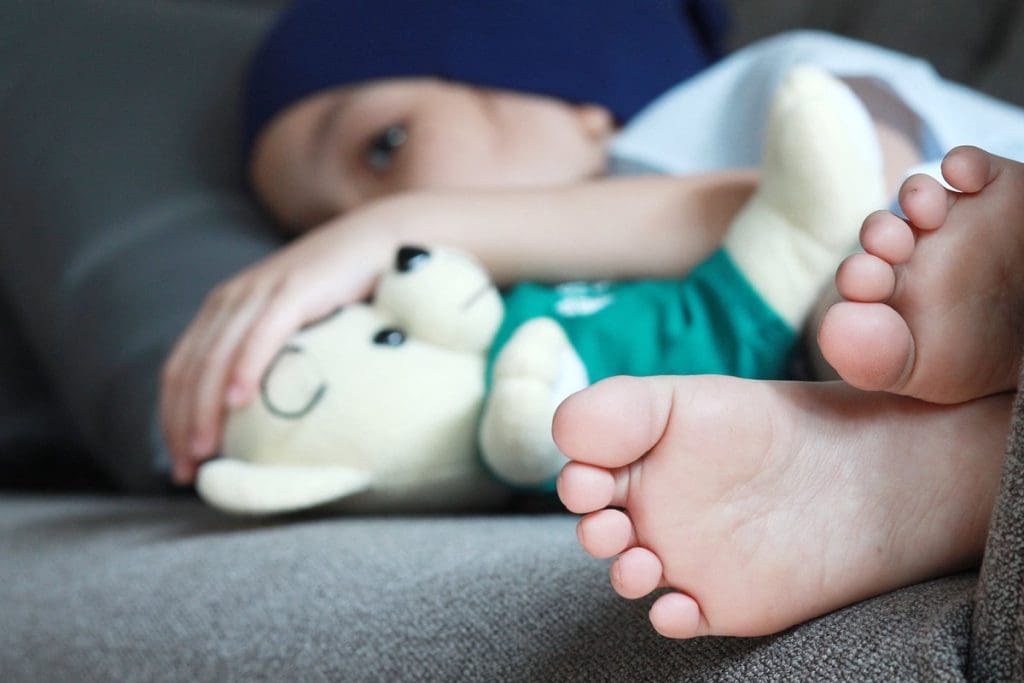Last Updated on November 13, 2025 by

When a four-year-old child experiences a sickle cell pain crisis in their right wrist, it’s crucial to see a doctor right away. Acute sickle cell pain can occur anywhere in the body, including the arms, legs, joints, back, or chest, due to vaso-occlusive crises.
Managing pain quickly and effectively is vital in sickle cell disease. Our approach combines medical treatments with supportive care to ensure the child feels better and recovers safely.
It’s key to understand sickle cell disease pain to manage it well in young kids. This disease changes red blood cells, making them stiff and curved. This can cause vaso-occlusive crises.
A vaso-occlusive crisis happens when sickled red blood cells block blood vessels. This leads to tissue ischemia and pain. It’s the main reason for pain in kids with sickle cell disease.
Recent data shows over 80% of sickle cell crisis hospitalizations in young kids are for acute pain. Most of this pain is from vaso-occlusive crises.
Extremities like wrists are often hit by vaso-occlusive crises. This is because their small blood vessels can easily get blocked by sickled red blood cells. This causes a lot of pain and discomfort.
“Pain management is vital for kids with sickle cell disease,” say healthcare pros. It’s important to understand the pain and use the right treatments.
It’s important to spot a sickle cell crisis in a child’s wrist early. We must tell apart the pain of a crisis from other injuries. This helps us give the right care.
A sickle cell crisis shows up as swelling, tenderness, and less movement in the wrist. These signs can look like other injuries. But, a detailed medical history and physical check can figure out the real cause.

Children with a sickle cell crisis might have wrist pain, swelling, and less movement. They might also feel feverish, tired, and have changes in appetite or mood. Knowing these signs is key to helping them.
Some symptoms need quick medical help, like severe pain, high fever, or dehydration signs. We should teach parents and caregivers about these warning signs. This ensures they get help fast.
By knowing the signs of a sickle cell crisis in a child’s wrist, we can act quickly. This helps improve the lives of kids with sickle cell disease.
If a sickle cell crisis happens, young children can take steps to feel better before seeing a doctor. It’s key to manage pain well to keep the child comfortable and safe.
Using a warm compress on the wrist can help with pain. A warm, moist towel or a low-setting heating pad works well. It’s also important to keep the child hydrated with water and juice.
Supporting the wrist gently can also help. A soft splint or sling can keep the wrist steady and reduce pain.
It’s important to write down the child’s symptoms and any steps taken before seeing a doctor. This helps doctors understand the situation and treat it right. Note when the pain started, how bad it is, and what makes it better or worse.
These steps help ensure the child gets the best care before and during treatment. Managing pain in sickle cell disease requires these actions and medical help.
When a child with sickle cell disease comes to the emergency department in pain, we act fast. We quickly assess their condition and prioritize them based on how severe their pain is. This ensures we help them as quickly as possible.
We focus on the severity of pain and any possible complications in sickle cell patients. We check the child’s overall health, looking for signs of distress or other symptoms that worry us.
At first, we do a detailed check to understand the pain crisis. This includes a physical exam, looking at their medical history, and sometimes, tests to find other pain causes.
Key components of the initial assessment include:
For preschoolers, we use special pain scoring tools. The Faces Pain Scale or the FLACC (Face, Legs, Activity, Cry, Consolability) scale helps us understand their pain.
We check their pain often, every 20-30 minutes, to make sure it’s being managed well. Working with hematology and other care teams is also key for their care.
Managing sickle cell crisis in kids needs a mix of treatments. Pain relief is key and often involves several medicines.
Intravenous opioids, like morphine, are key for severe pain. The dose is based on the child’s weight and how bad the pain is. It’s important to watch closely for side effects and make sure the pain is managed well.
NSAIDs, such as ketorolac, can also help with pain. Ketorolac can reduce pain when used with opioids, if there are no risks like kidney problems or bleeding.
It’s vital to check how the child is doing after giving pain medicine. Use tools to measure pain that work for young kids. Watch for any side effects and adjust the treatment as needed.
Using a mix of IV opioids and NSAIDs helps manage pain in sickle cell crisis. This not only relieves pain but also reduces stress and anxiety. It improves the child’s overall situation.
Non-pharmacological strategies are key in easing wrist pain in young children with sickle cell crisis. They work alongside medicines to offer full care.
Warm compresses are a simple yet effective way to manage wrist pain. Use a warm, damp cloth wrapped in a towel to avoid burns. This method boosts blood flow, reducing pain and discomfort.
Distraction techniques are great for taking a child’s mind off the pain. For young ones, playing with toys, watching cartoons, or interactive games work well. Guided imagery or storytelling can also help them relax.
Emotional support is vital during a sickle cell crisis. Parents and caregivers should reassure and comfort the child. Gentle massage, cuddling, or just being there can lower anxiety and stress.
Proper positioning and immobilizing the wrist can ease pain. Gently use a soft bandage or sling to limit movement and discomfort. Making sure the child is comfortable and supported is essential for pain relief.
By using these non-pharmacological methods, we can better manage wrist pain in children with sickle cell crisis. This improves their comfort and outcomes.
A team of different healthcare experts is key in treating sickle cell pain crisis in young kids. We think that having many specialties helps give kids the best care possible.
Pediatric hematology specialists are very important in handling sickle cell disease. They create treatment plans that fit each child’s needs. This includes managing pain and stopping future crises.
Managing pain well is very important in treating sickle cell crisis. We team up with pain management experts. This helps kids get the right pain relief, making them more comfortable and improving their results.
If wrist pain doesn’t go away or comes with other worrying signs, seeing an orthopedic specialist is a good idea. They check if more tests or actions are needed.
We focus on family-centered care. This means we involve parents and caregivers in making decisions. It helps the family feel supported and able to care for their child well.
Managing a sickle cell crisis in a four-year-old child needs a full plan. This plan includes both medicine and non-medicine ways to help. By knowing how to handle sickle cell disease pain, we can make care better for kids in pain.
Using both medicine and non-medicine ways can really help lower pain in sickle cell anemia. Big children’s hospitals show that a full plan to manage sickle cell crisis works. It’s key to get quick medical help, use proven pain management, and have a team of doctors and nurses.
By taking a complete care approach, we can get the best results for kids with sickle cell disease. This makes their life better and helps families deal with these tough medical issues.
Symptoms include swelling, tenderness, and reduced mobility. Severe pain, fever, or dehydration are urgent signs for medical help.
Pain management uses intravenous opioids and NSAIDs. The doses are adjusted based on the child’s response. Pain scoring helps assess the pain level.
Non-pharmacological methods include warm compresses and distraction techniques. Psychological support helps the child cope with the crisis.
Smaller blood vessels in extremities are more prone to blockage. This leads to tissue ischemia and pain.
A team of specialists provides care. This includes pediatric hematology, pain management, and orthopedic experts. Family-centered care ensures family involvement and support.
Use warm compresses and ensure hydration. Document symptoms and interventions to inform medical providers.
Diagnosis involves identifying vaso-occlusive crisis pain. Symptoms like swelling and tenderness are key.
Family-centered care improves outcomes. It ensures family involvement and support, leading to better care.
Subscribe to our e-newsletter to stay informed about the latest innovations in the world of health and exclusive offers!